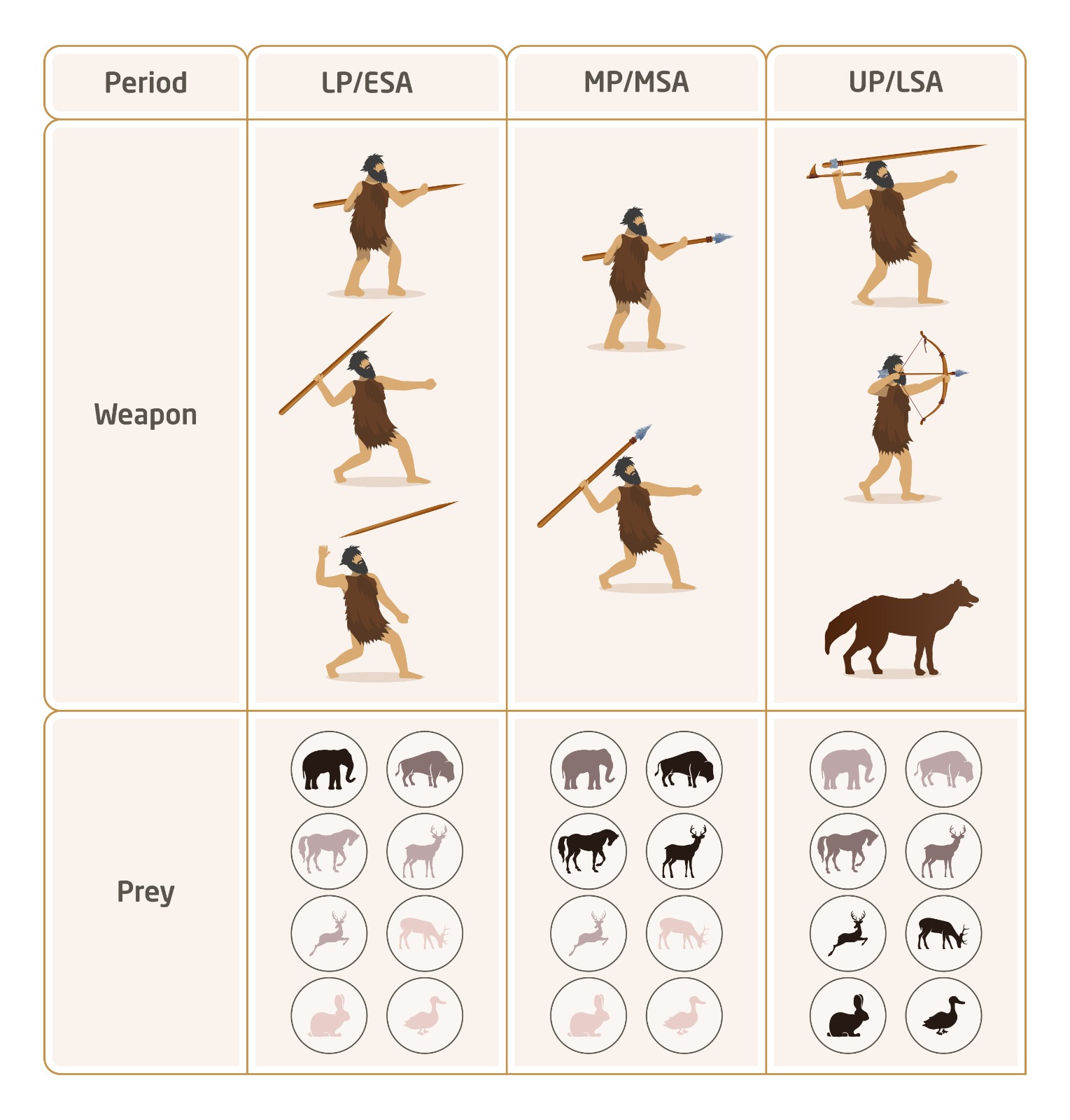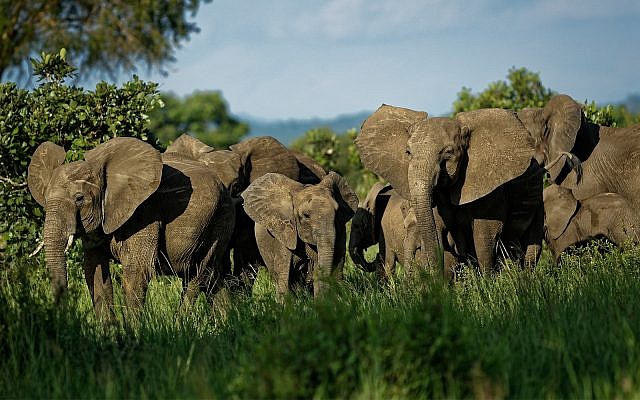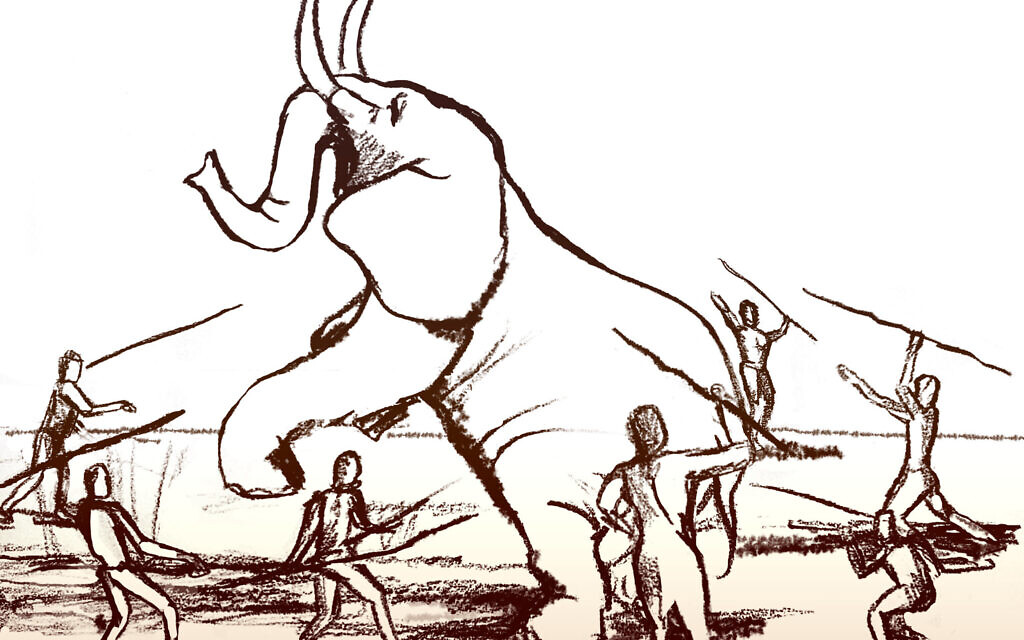When elephants started disappearing from the Middle East some 400,000 years ago, it was a major crisis, and not just for the ancient elephants. Early humans across the region, including in what is now Israel, depended on elephants for their diet. Eventually, humans adapted, learning how to hunt smaller prey such as bison, deer and gazelles, until those, too, disappeared from the landscape or their numbers were too small to hunt. This forced humans to adapt to even smaller prey such as rabbits and birds, and, eventually, to domesticate plants and animals during the agricultural revolution.
A new paper from the peer-reviewed Quartenary journal by Tel Aviv University researchers Dr. Miki Ben-Dor and Prof. Ran Barkai proposes that as humans were forced to find new food resources, their hunting tools improved, allowing them to hunt smaller prey that moved faster.
“Animal prey prevalence and availability had a profound influence on human culture and biology,” explained Barkai, a professor of prehistoric archaeology at Tel Aviv University.
Barkai and other researchers have published previous articles delving into how the size of animal prey declined through time, from megaherbivores such as elephants to small prey such as waterfowl and rabbits. But in this recent article, the researchers matched the decline in animal prey size to improvements in hunting tools, from wooden spears to stone-tipped spears to bows and arrows to domesticated dogs. As the prey got smaller and more wily, the hunting tools got more advanced, lethal and precise.
“Until now, there’s no explanation for the reason why people changed their stone technologies throughout the 1.5 million years of human evolution in the Levant,” said Barkai. “In this recent paper, we put together these two data sets of animal prey availability, and stone tool chronology suggested a nexus and linkage between the two.”
The land of the elephants
The elephants that stampeded through the Middle East prior to 400,000 years ago were called “straight tusk elephants,” with the largest males reaching some 13 tons in weight. In comparison, the average African bush elephant today is around 7 tons for males. “They were huge, even larger than the mammoths in Europe,” said Barkai.
Early humans would kill elephants sparingly, but when they did, it was cause for celebration, as it could feed their community for months. Archaeological sites across the Middle East and the world have documented rituals and artwork revolving around elephant hunts.
Early humans would smoke the meat or keep it in cold running water to preserve it for months. They kept the marrow inside the bones and would crack the bones open weeks later to eat.

Barkai compared the practice to modern-day indigenous communities in the Arctic that kill a whale once a year and have deep cultural traditions and appreciation for the whale they are taking, which will support their community for many months and enable them to survive the harsh winter.
Hunting elephants and other megaherbivores such as rhinos and hippos required a process called “disadvantage hunting” which usually meant luring the animal into a trap, such as a deep pit, where it would eventually starve to death, or where humans could beat it to death with wooden spears and clubs.
Crazy for fat
Why were elephants so prized as food? The answer is simple: fat. Bigger animals provide more fat, so humans hunted the biggest animals they could find. Focusing on the amount of fat, rather than the amount of meat, was a turning point for creating this unified hypothesis, said Barkai.
“When we realized that elephants provide extraordinary fat deposits for humans, we realized that fat provides double the energy of meat without any digestion cost,” he said. Previously, most of the research focused solely on the meat to understand why early humans ate what, explained Barkai. “When we went into the literature, we saw indigenous societies are crazy about fat,” he said.

It’s unclear why elephants disappeared around 400,000 years ago, though it was probably a result of climate change combined with hunting. The hunting may have weakened the existing herd so that the elephants could not survive the ecological changes, Barkai said.
Never going to give up on persistence hunting
Disadvantage hunting works for the megaherbivores, but is less effective for smaller animals that like to run, such as bison, zebras, and gazelles that can escape a trap. In order to hunt these animals, early humans depended on “persistence hunting,” which means running them to exhaustion and using hunting tools such as stone-tipped spears that are thrown from a distance to wound the animal so that it collapses sooner. Eventually, humans hunted smaller and faster prey, for which they developed bows and arrows.
“We know that every innovation started on a very small scale, while the previous technology was still in control,” said Barkai.
Barkai is excavating an area called Qesem Cave, about 12 kilometers (7 miles) east of Tel Aviv, which was inhabited between 400,000 years ago and 200,000 years ago. The cave captures a snapshot of human settlement at a “very significant junction in human cultural and biological evolution,” he said.

“[Qesem Cave] presents significant changes both in human biology in anatomy, and human culture lifestyle,” he said. “We wondered why these changes took place in the Levant 400,000 years ago, while people were living in the Levant a million years before that, in a different lifestyle. We came to the conclusion that the trigger for the change was the disappearance of elephants.”
Suddenly, humans had to grapple with a new way of obtaining food and it changed everything, from the way their body processed food to the way they organized their society.
Other archaeologists have studied the tools found in Qesem Cave to try to understand how humans adapted to their changing diet, including forging their tools in fire, a new technology for humans some 300,000 years ago.
Learning to make do
The lesson Barkai has taken from the disappearing elephants and the improving hunting technology is twofold.
The downside is that there was a very significant cost to humans’ existence on the planet and that they may have contributed to the extinction of species, which may have been the case with the elephants of ancient Israel.
“But on the optimistic side, you can see that humans are innovative, and humans can cope with any change that took place,” he said. “When their food resources declined, they got new ideas and they used their life experiences to come up with new ways of making a living. We believe that when they ran out of animals with high amounts of fat, they domesticated animals. We suggest that the transition to agriculture followed the decline of animals for prey.”
Today, with the boom in food tech, prey is continuing to get even smaller. Scientists are creating sources of protein, modern-day prey, from cells grown in a lab. Barkai believes that this hypothesis linking prey size and hunting innovation is an important lesson for modern society.
“Archaeology can teach us a lot about people today,” Barkai said. “Archaeology is a kind of perspective about what went on in human evolution, when and where we went wrong, and where we went right.”

